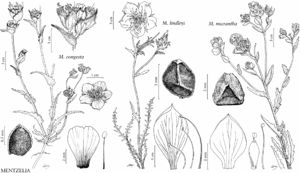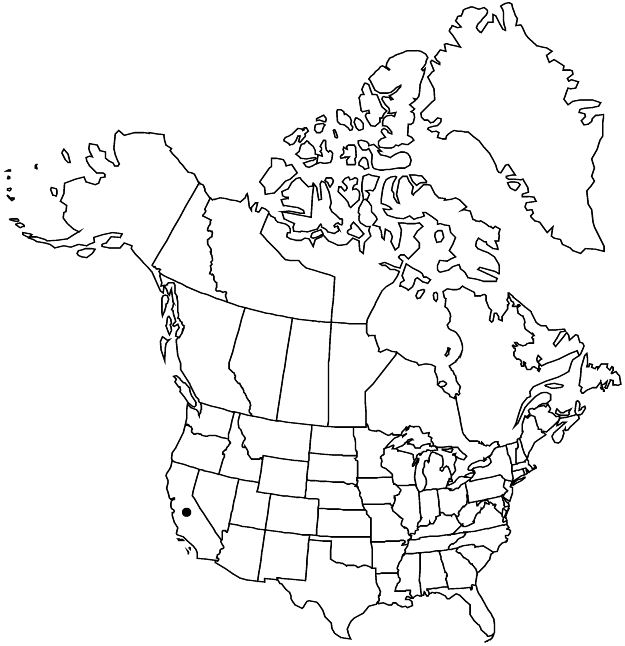Difference between revisions of "Mentzelia lindleyi"
Fl. N. Amer. 1: 533. 1840.
FNA>Volume Importer |
imported>Volume Importer |
||
| (One intermediate revision by the same user not shown) | |||
| Line 60: | Line 60: | ||
|publication year=1840 | |publication year=1840 | ||
|special status=Illustrated;Endemic | |special status=Illustrated;Endemic | ||
| − | |source xml=https:// | + | |source xml=https://bitbucket.org/aafc-mbb/fna-data-curation/src/2e0870ddd59836b60bcf96646a41e87ea5a5943a/coarse_grained_fna_xml/V12/V12_908.xml |
|genus=Mentzelia | |genus=Mentzelia | ||
|section=Mentzelia sect. Trachyphytum | |section=Mentzelia sect. Trachyphytum | ||
Latest revision as of 19:18, 5 November 2020
Plants candelabra-form, 30–70 cm. Basal leaves persisting; petiole present or absent; blade lanceolate to linear, margins usually deeply lobed, lobes rounded. Cauline leaves: petiole absent; blade ovate to lanceolate, to 17 cm, margins deeply to shallowly lobed. Bracts green, ovate to lanceolate, 6.1–14.2 × 3.6–5.1 mm, width 1/3–2/3 length, not concealing capsule, margins 3–7-lobed. Flowers: sepals 9–19 mm; petals orange proximally, yellow distally, obovate, 20–40 × (12–)16–33 mm, apex mucronate; stamens 20+, 12–30 mm, filaments heteromorphic, 5 outermost linear, inner filiform, unlobed; styles 15–24 mm. Capsules clavate, 25–40 × 4–5 mm, axillary curved to 90° at maturity, usually inconspicuously longitudinally ribbed. Seeds 30–40, in 2+ rows distal to mid fruit, tan, dark-mottled or not, irregularly polygonal, surface minutely tessellate under 10× magnification; recurved flap over hilum absent; seed coat cell outer periclinal wall domed, domes on seed edges less than 1/2 as tall as wide at maturity. 2n = 36.
Phenology: Flowering May–Jun.
Habitat: Rocky, open slopes, coastal sage scrub, oak-pine woodlands.
Elevation: 90–1400 m.
Discussion
Naturally occurring populations of Mentzelia lindleyi are limited primarily to the Coast Ranges of the San Francisco Bay area. However, commercial distribution of seeds has resulted in casual alien populations of M. lindleyi throughout the southwestern United States. See 68. M. crocea for discussion of similarities between these species.
Selected References
None.

